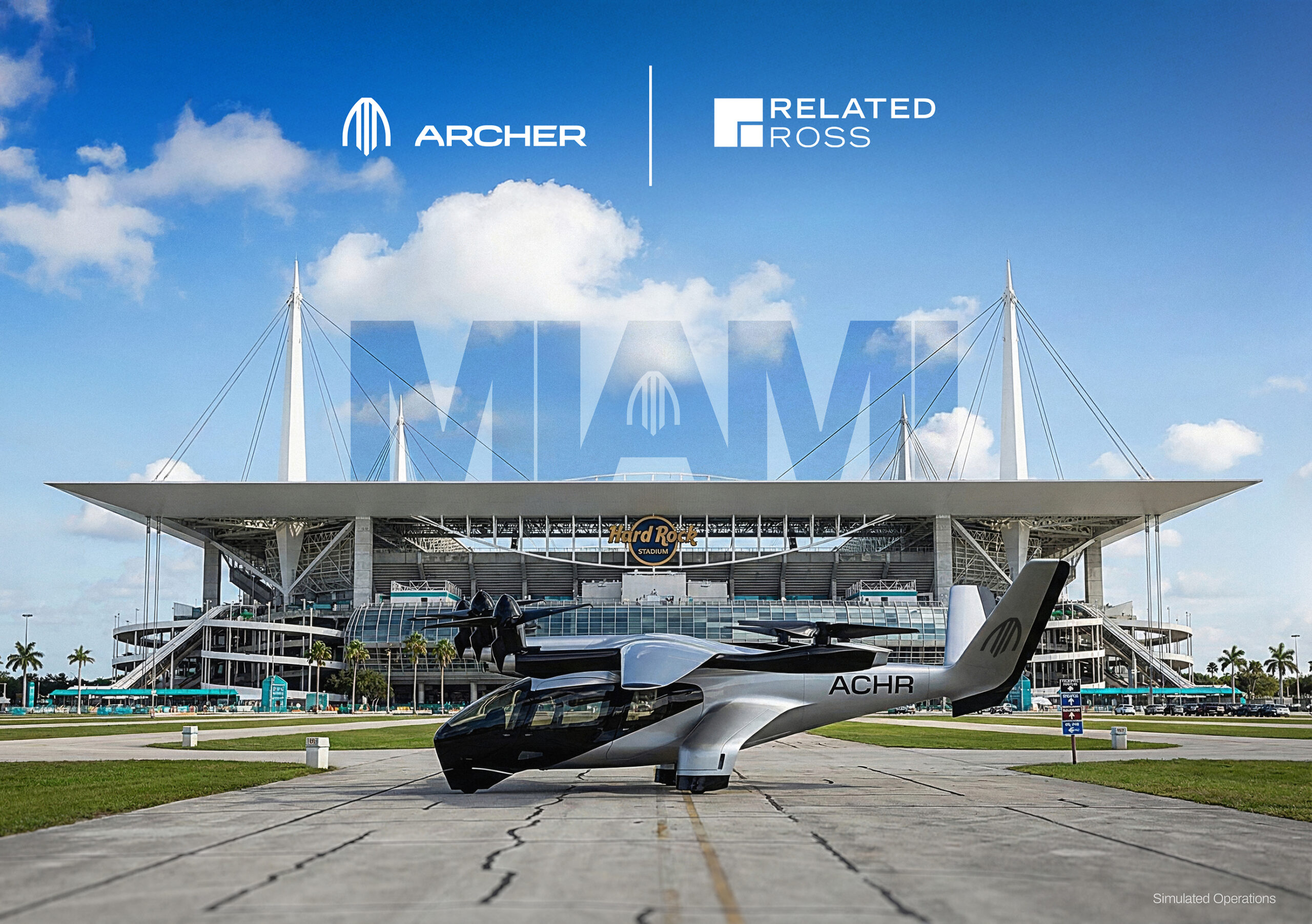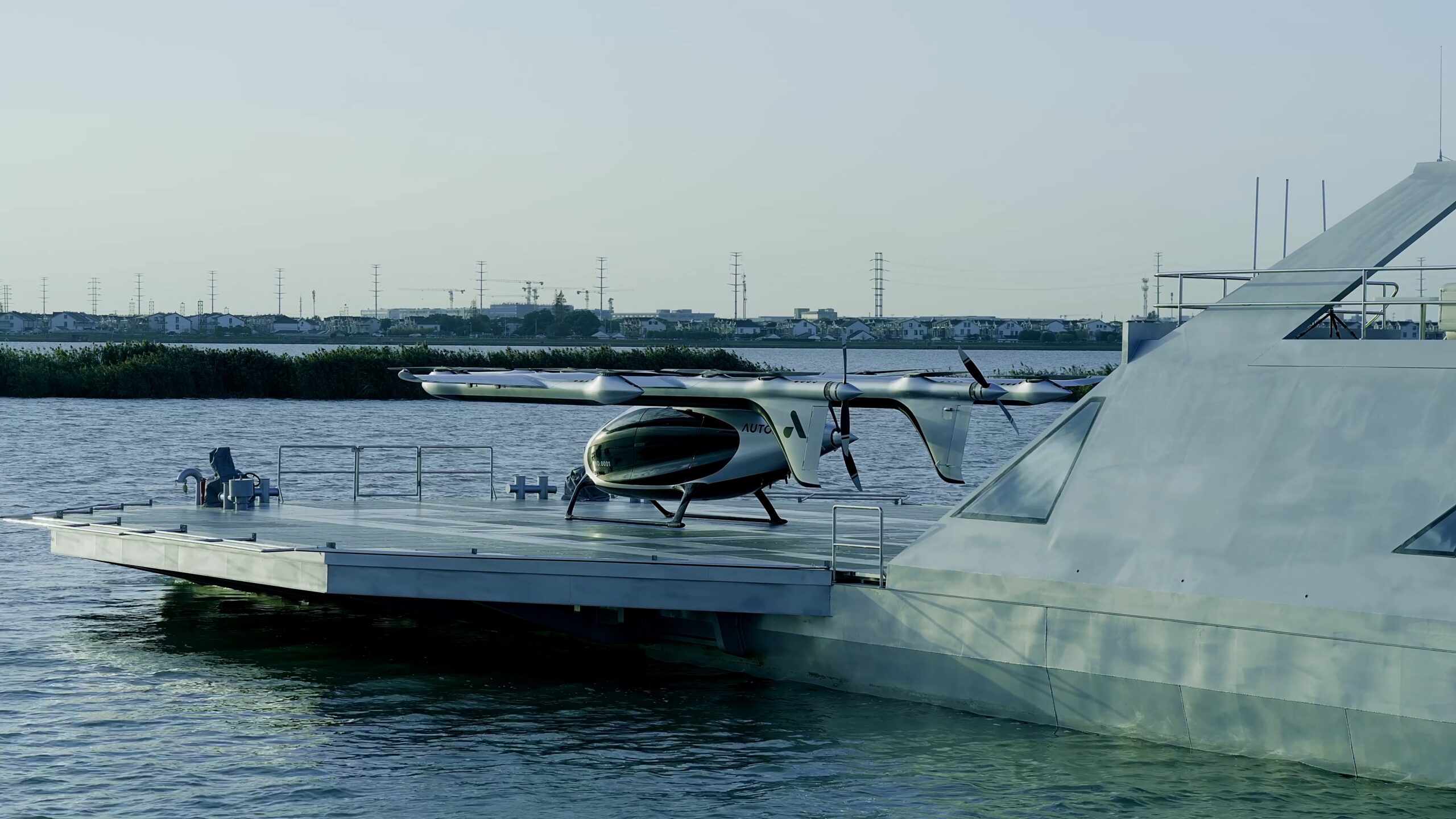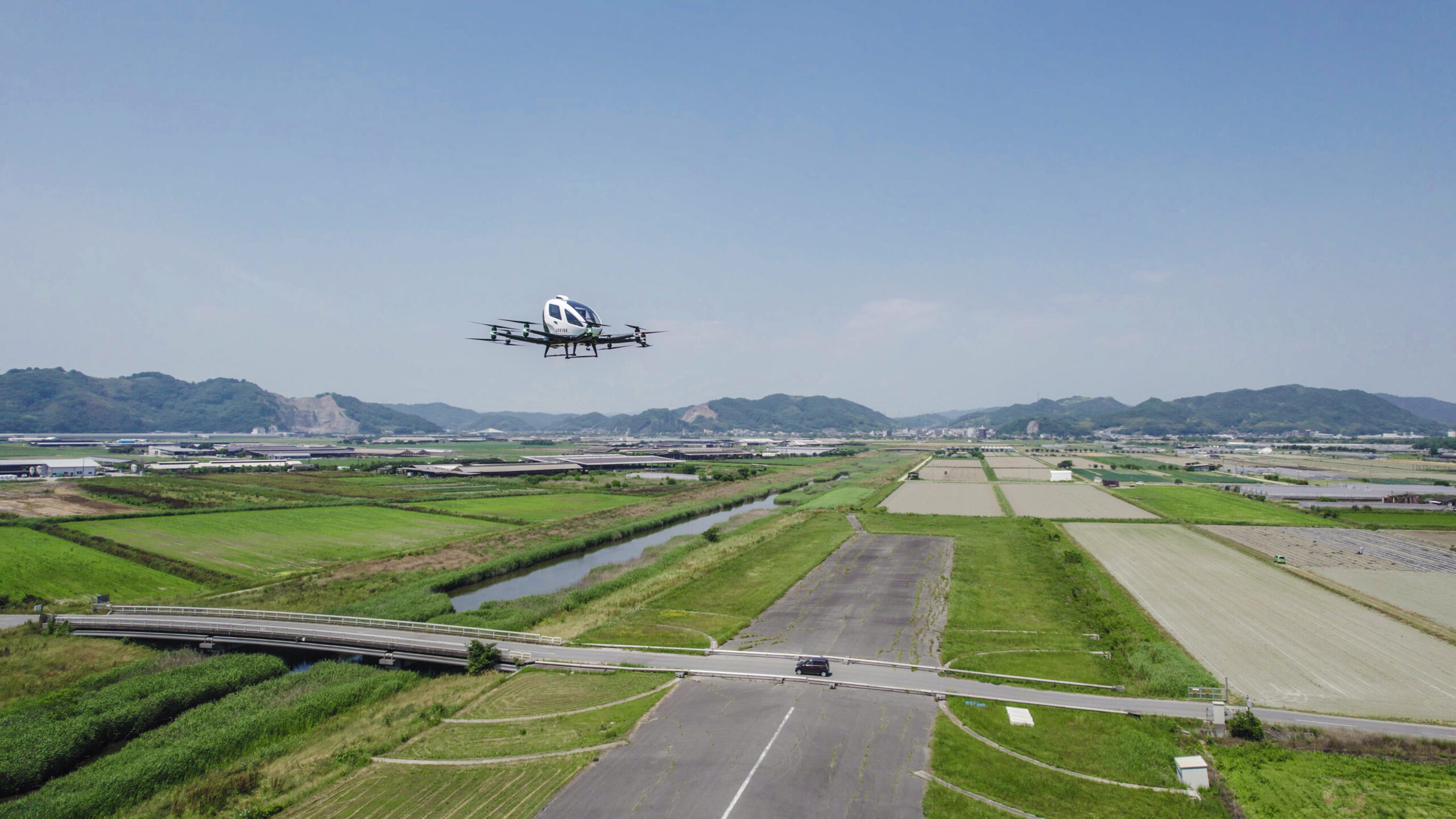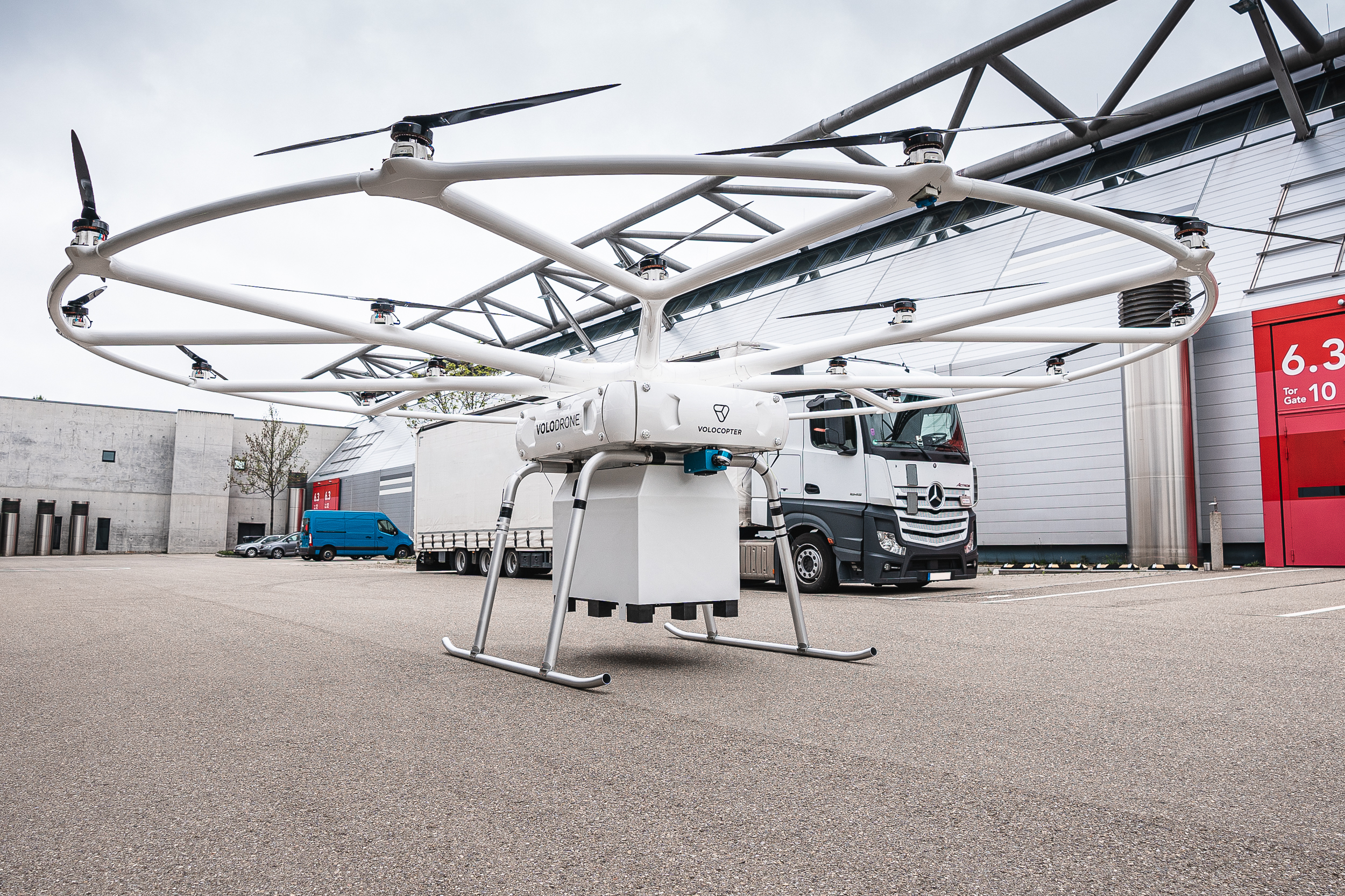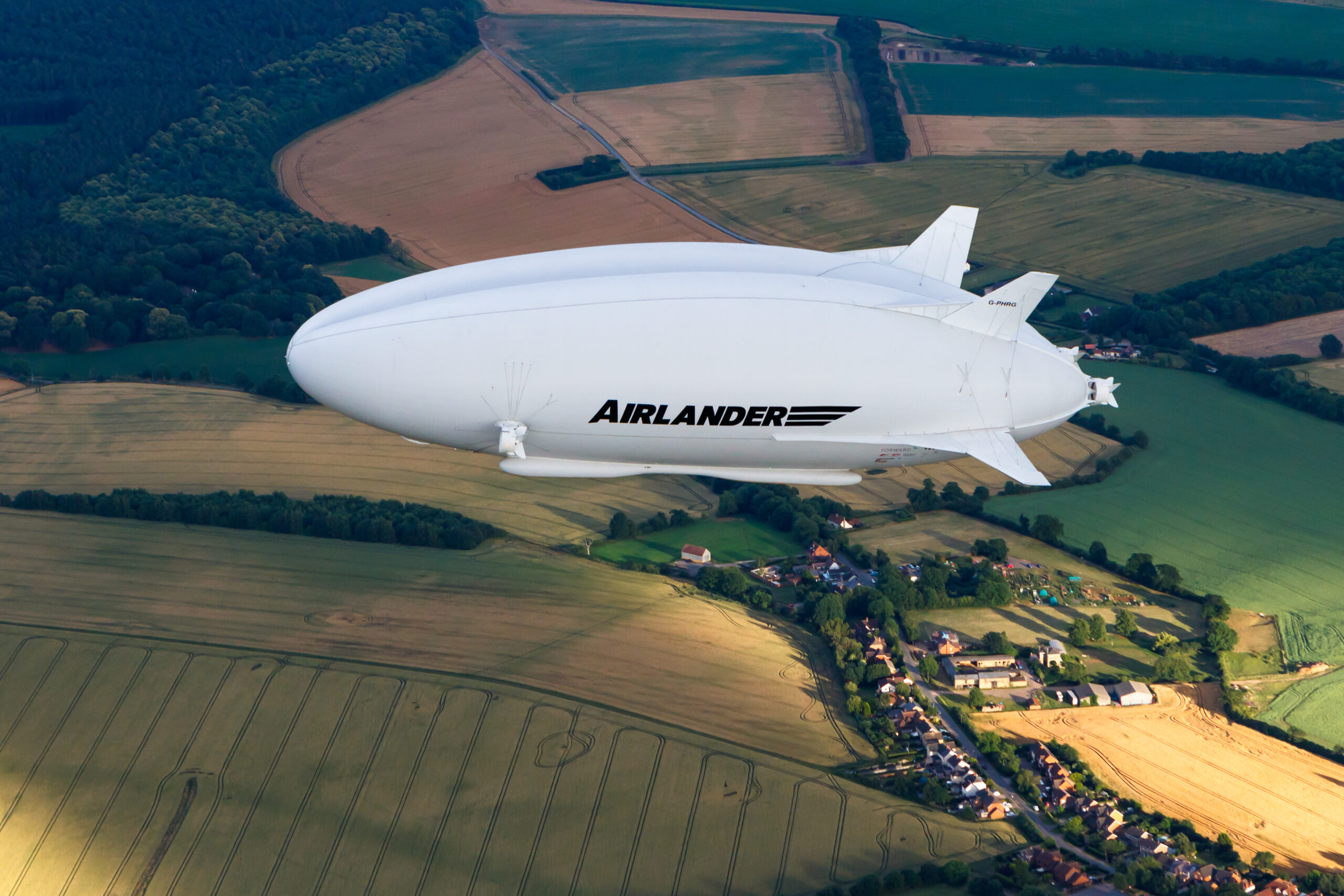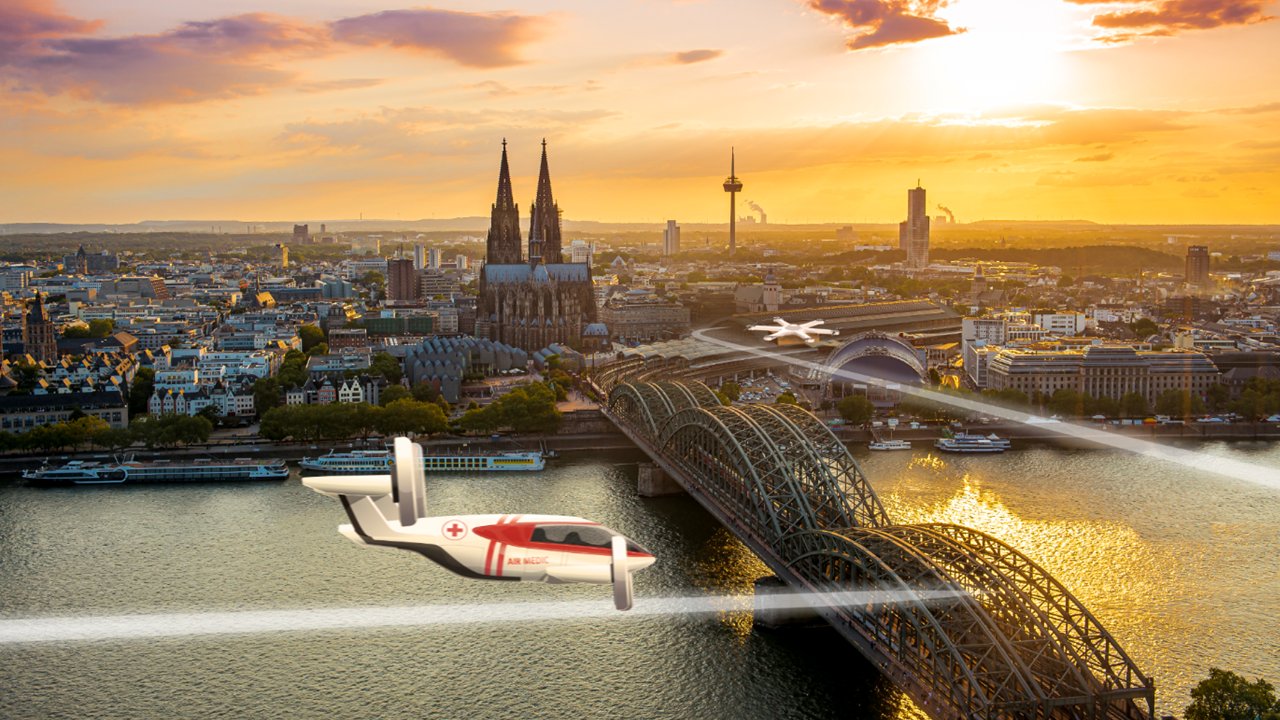Zuri Reveals Its New Sustainable Interior Design Concept
- New interior design in Executive and VIP versions; a part of the new model line with the internal designation ZURI 2.0
- Using flax fiber-reinforced boards to increase stiffness, decrease weight and improve vibration damping..
- 3D-knit material made from 100% recycled PET bottles and synthetic leather made of vegetable fibers are planned for upholstery in Executive and VIP interior versions.
Zuri, a Prague-based company developing hybrid VTOL1 aircraft for advanced regional air mobility, has unveiled a new interior concept. The new interior reflects the company’s commitment to sustainability and aims to lower the negative environmental impact of air transport by reducing weight, cutting plastic content, and lessening waste material.
Since 2017, Zuri has been developing a hybrid VTOL aircraft capable of efficiently transporting passengers and cargo at distances 2exceeding 600 km. Such range makes ZURI hybrid VTOL significantly different from many other companies, which use electricity exclusively to power their aircraft and thus considerably limiting the range.

ZURI is committed to helping reduce the environmental impact of aviation by using hybrid propulsion (a combination of lithium cells and a biofuel-enabled turbine generator) and also by using manufacturing processes and materials that have minimal impact on the environment.
Now, ZURI presented a new interior design concept in the Executive and VIP versions, which will be part of a new model line with the internal designation ZURI 2.0.
The Executive version offers space for four passengers and a pilot; the VIP version has space for three passengers and a pilot. Both versions provide travel comfort well above the level of ordinary business class. The front seat is swivel in both the Executive and VIP versions, allowing direct communication between passengers.
Thanks to the large windows, including the glass ceiling panels in the front of the aircraft, flying in ZURI offers an extraordinary experience. Passengers can relax in anatomically shaped and adjustable seats, enjoy the view outside, or use the onboard infotainment system, offering full internet access, entertainment, and detailed information about the current flight.
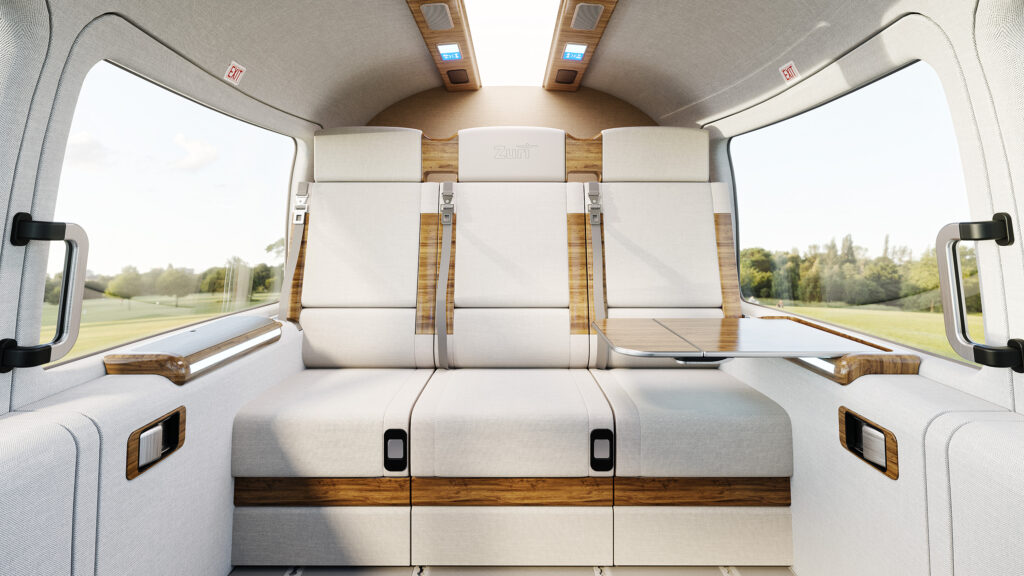
The materials used for interior walls and ceiling panels, flooring materials, and materials for seats were selected with regard to aesthetic and functional goals and their environmental impact.
The wall and ceiling panels are expected to be made of a composite based on flaxfibers, upon 3successful certification of such composites. Flax-based material or similar plant-based materials can create a robust support structure, which is subsequently covered only by a thin surface layer of the visual material. As a result, such technology can triple the flexural bending stiffness, decrease material use and weight while improving vibration damping.
The use of composite materials based on flax fibers offers up to 70% savings in plastics and approximately 50% savings in parts weight, which increases the operational efficiency of the ZURI hybrid technology.
The upholstery fabrics used on the Executive seats are selected not only for comfort and aesthetics but also for their environmental impact. 3D-knit material, well-known in the fashion and active footwear industries, which is expected to be used for seats, utilizes 100% recycled PET bottles.
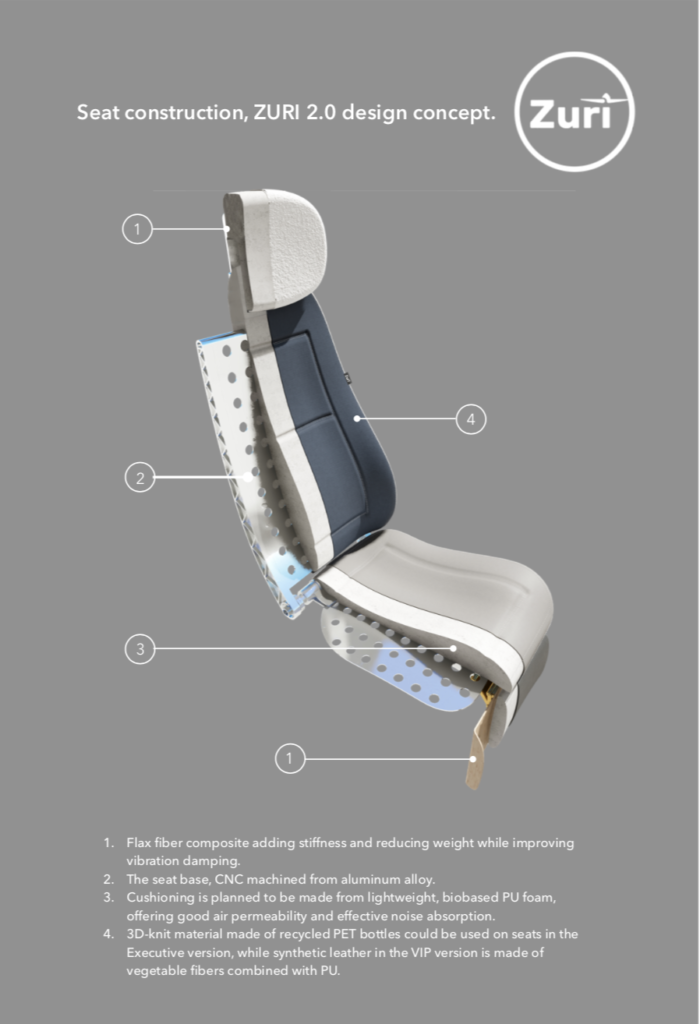
The ZURI’s VIP interior variant could take advantage of synthetic leather instead of animal leather. It is a well-documented fact that animal leather is the most environmentally toxic textile of all. The synthetic leather for upholstery in the VIP version is planned to be made of vegetable fibers combined with PU obtained mainly from recycled material.
- 1 – Vertical Take-Offand Landing aircraft can vertically take-off, land, and transition into a horizontal flight mode. Vertical flight mode 1represents a significant advantage over standard aircraft technologies that require runways to take-offand land.
- 2 – Range of 600km includes 45min IFR reserve.
- 3 – Flax is an indigenous plant that grows naturally in Europe. It requires very little water and nutrients to grow successfully. Cultivation 3and processing of the flax plants require no chemicals that could contaminate groundwater.
This article was originally published by Zuri.



